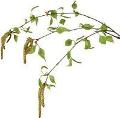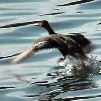Use of material is possible with active link
© 2015 - 2024. Hunting, Fishing - Information Portal Support the project, donate
Waterfowl. Duck hunt
Speaking about hunting waterfowl, meant in the first place duck hunt. Such hunting is the most popular and common. For ducks, there are several ways of hunting: hunting for morning and evening flights, hunting tent with stuffed animals, hunting from a boat, hunting approach, in shallow water and other.
The most popular hunting farms is duck hunt on the morning and evening duck flight, when the birds after sunset, flying from the field days on feed, and in the morning, before dawn, flying from the feeding grounds in designated days. These flyways and built huts or hidden places for hunters.
Duck flock, before sitting down on the aft place, usually makes two or three circles, gradually reducing. The approaching flocks to the place of feeding begins after some 15-20 minutes after sunset and lasts for 20-30 minutes, after which arrive almost stops, and they only singles or someone disturbed the birds. Sometimes the approach continues in complete darkness. The way the evening and the morning flight of ducks, as a rule, do not coincide.
In those places where there are no large bodies of water where ducks nest and keep on overgrown with sedge bays of small rivers, and evening and morning flights bright not expressed, permitted hunting approach. It requires the hunter distinct sporting qualities: strength, endurance and perseverance in achieving their goals. Many hunters prefer to hunt all the rest.
In the second half of September small duck flocks begin to be grouped into larger for return flight to their wintering grounds and leave small ponds. A little later, there are flocks of Northern ducks, who are now addicted to stuffed animals. To hunt with stuffed at this time in the day.
Small ducks need to shoot shot No. 7 or 6; large ducks (Mallard, grey, Pintail) - No. 5 or 4; Hale and wound better to shoot fraction No. 3.
The hunter need to know and some features of the behavior of ducks in different weather conditions. In a quiet, Sunny, clear weather duck leisure willingly chosen hummocks, quagmire, felled trees into the water, coming ashore in remote places and put the head under the wing, rest. In a quiet, cloudy weather duck rest, usually on a small river near protective vegetation. In a heavy mist ducks do not stay long in the place. They are during the day willing to fly from place to place. This is due to the fact that the plumage accumulate droplets of water that duck seeks from time to time to shake off in flight. In rainy weather the duck is resting a little, so after a rain, especially if the bad weather lasted for a few days, she reluctantly takes off.
In windy weather duck hammered in dense sedges or reeds not far from reach, but always on the windward side, so that didn't bother wave. Sitting duck in windy weather very tight.
Video: Aiming, preempting for duck hunting and shooting a flying duck
Duck hunt.

